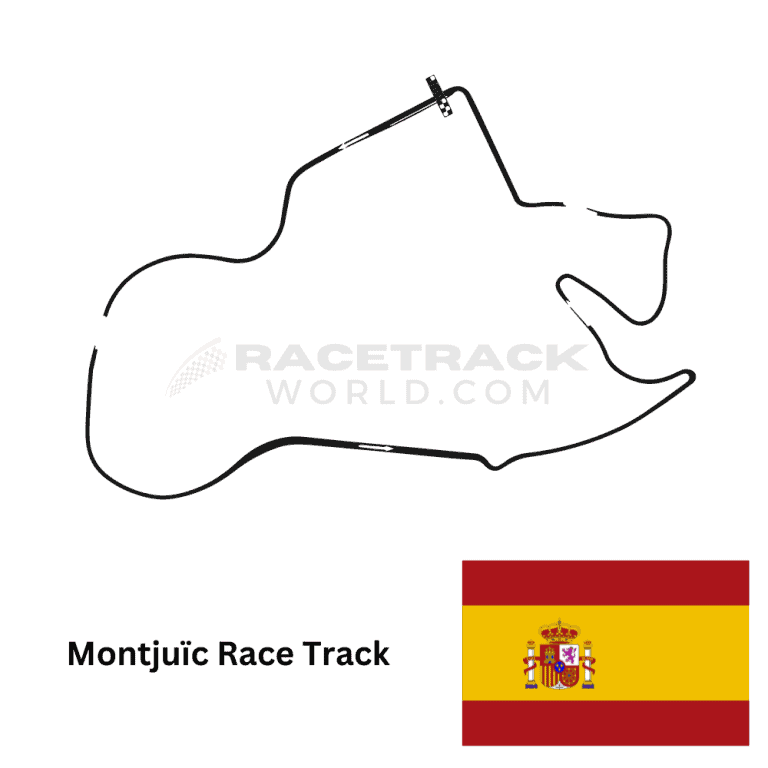Montjuïc Circuit Info

Hotels near Montjuïc Circuit
Montjuïc Circuit History
The Montjuïc Circuit, nestled in the heart of the Montjuïc neighborhood in Barcelona, Spain, holds a special place in the history of motorsports. This legendary street circuit hosted the Spanish Grand Prix four times between 1969 and 1975, leaving an indelible mark on the world of Formula One. Let's take a closer look at this iconic circuit and explore its unique characteristics, along with some accommodation options for those looking to experience its legacy.
A Temporary Gem in the Racing World
The Montjuïc Circuit was unlike your typical racing venue. It was a temporary facility, constructed afresh for each event and then disassembled. This design allowed it to weave through the streets of Montjuïc, creating a unique and challenging experience for drivers and spectators alike.
Designed by a Master
Renowned circuit architect John Hugenholtz lent his expertise to craft this exceptional racing track. Hugenholtz's portfolio includes some of the world's most iconic circuits, such as the Suzuka Circuit in Japan and the Zandvoort Circuit in the Netherlands.
The Circuit Specs
Spanning 3.791 kilometers, the Montjuïc Circuit boasted 16 turns, offering a thrilling mix of fast and slow corners. The track, with its 12-meter width, catered to both cars and motorcycles, promising versatility for various racing disciplines.
The Breathtaking Location
What set the Montjuïc Circuit apart was its location on the slopes of Montjuïc Hill, overlooking the picturesque city of Barcelona. The track offered breathtaking views of the city and the Mediterranean Sea, earning its reputation as one of the most scenic circuits worldwide.
Challenging Features
The circuit's design included several challenging corners. Notable among them were a fast left-hand kink at Turn 2 and a tight hairpin at Turn 7. It also featured long straights, allowing drivers to hit high speeds and execute thrilling passing maneuvers.
Thrills and Dangers
The Montjuïc Circuit quickly gained fame for its challenging layout, exciting racing, and dramatic moments. However, it was equally notorious for its dangers. The narrow track and minimal run-off areas meant that even the smallest driver error could lead to catastrophic consequences.
A Tragic Turn of Events
Tragedy struck the circuit in 1975 during the Spanish Grand Prix. Rolf Stommelen's car suffered a suspension failure, causing a horrific accident that claimed the lives of four spectators and injured several others. This tragic incident led to the cancellation of the race and left a lasting mark on the circuit's history.
Safety Measures and Legacy
Throughout its history, numerous safety improvements were implemented, but the Montjuïc Circuit retained its treacherous charm. Today, the circuit no longer exists as a motorsports facility, having been dismantled. However, visitors to Barcelona can still explore the Montjuïc neighborhood and visit landmarks associated with the circuit.
Where to Stay
If you're planning a visit to explore the Montjuïc Circuit's legacy, there are several hotels nearby where you can stay:
-
Hotel Montjuïc: Experience the charm of Montjuïc at this conveniently located hotel. With its stunning views and comfortable accommodations, it's an excellent choice for motorsports enthusiasts.
-
Hotel Miramar Barcelona: Nestled atop Montjuïc Hill, this luxury hotel offers a tranquil escape while being close to the circuit's historical site.
-
Crowne Plaza Barcelona – Fira Center: This modern hotel is perfect for those looking for a comfortable stay with easy access to Montjuïc and other attractions in Barcelona.
The Montjuïc Circuit may have seen its last race, but its legacy lives on, offering an unforgettable blend of history, challenge, and beauty for all who visit.
